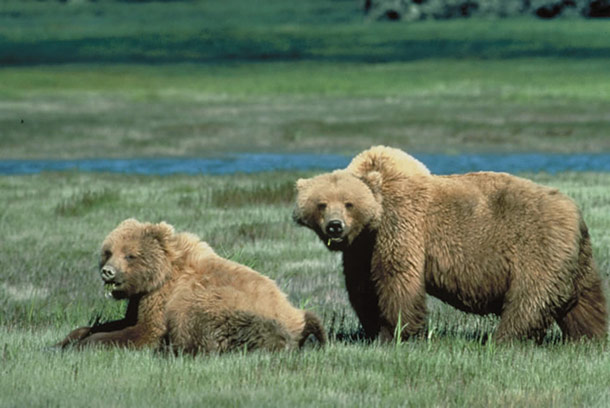In 1918, an irate landowner in Glacier National Park complained to a park ranger that a bear had devoured the contents of his outdoor meat safe, demanding that officials adopt a more aggressive approach to their bear management policies.
Writing that he was “aware that it is the policy of the Park Government that these dangerous animals have the absolute freedom of the Park and that they go unmolested and unharmed,” according to an Aug. 23, 1918 letter to park rangers, the property owner suggested that “the policy should be to shoot these animals whenever they appear in the vicinity of hotels, private residences or camps.”
Similar attitudes toward bear management persisted through the decades in some segments of society, but bears have since become highly valued as an important cultural and ecological species, and Glacier’s bear management program has evolved to reflect the increased awareness.
Management has shifted from removing problem animals to preventing problem bear behavior by modifying human behavior and preventing conflict, while mounting a growing body of science and research to inform management practices.
But it wasn’t always so.
In a 1998 study by Steve Gniadek, a biologist who worked in Glacier for 32 years, and Kate Kendall, a U.S. Geological Survey scientist who laid the groundwork for modern grizzly bear population studies in Northwest Montana, the researchers tracked the evolution of bear management in the park from 1960 to 1994, identifying what worked and what didn’t.
By 1960, the National Park Service had launched its first Bear Management Program, an effort designed to reduce the number of bear-caused human injuries and property destruction, as well as to reestablish bears to a natural state in national parks. Its guidelines were to increase visitor education about bear behavior, proper storage of food, garbage and other attractants; strictly enforce regulations that prohibited the feeding of bears; and remove potentially hazardous food-conditioned bears.
In Glacier, implementation of the new management plan also began with a directive: “When a grizzly bear appears in any area of visitor use, it will be immediately destroyed by a park ranger,” according to a 1960 memorandum.
“However, efforts were relatively ineffectual in making human food and garbage unavailable to bears,” according to the report by Gniadek and Kendall.
By 1967, those ineffectual efforts combined in a perfect storm on Aug. 13, when two young women were fatally mauled by food-conditioned grizzly bears in separate incidents on opposite sides of the Continental Divide, a tragedy remembered as “Night of the Grizzlies.”
The following year, Glacier responded by implementing its own bear management plan, a one-page document thought now to be woefully inadequate, but which has since been informed by a wealth of scientific research.
But even as the park successfully reduced grizzlies’ access to human food and garbage, bear-caused injuries to humans continued as both park visitation and bear populations increased, mostly due to surprise encounters.
Although Glacier officials didn’t pivot away from their focus on visitor education and reducing the availability of human food and garbage, the park began a more comprehensive effort to monitor and research bear activity in the park and beyond.
The park’s first bear biologist, Cliff Martinka, began researching grizzlies in earnest, and eventually developed one of the most sophisticated park-based science programs in the country, adding renowned scientists who embarked on influential projects.
Kendall is best known for her pioneering work in grizzly bear DNA research, and worked at the vanguard of grizzly bear population studies in Northwest Montana, helping to introduce non-invasive research techniques and inform wildlife management in a field that, until recently, lacked strong data.
In 2004, Kendall used a non-invasive bear-hair collection research method to estimate the number of grizzly bears roaming Montana’s Northern Divide Ecosystem (NCDE), an 8 million-acre study area that encompasses Glacier National Park and the Bob Marshall Wilderness complex, and which is one of the last strongholds of grizzly bears in the Lower 48 states.
That study relied on 34,000 fur samples to parse out an estimated 765 individual grizzlies in the ecosystem — more than two times the previous estimates. The current estimates put the NCDE population at between 900 and 1,000 bears.
As agencies strive to recover the species, which the U.S. Fish and Wildlife Service listed as threatened in 1975, Kendall recognized early on the need to assess population size, trends and survival rates, and to identify corridors that link segregated populations.
Portending the important role that research and monitoring would serve in suffusing the future of bear management in Glacier with hard data, the nearly 20-year-old report on the history of bear management concludes: “It will be a continuing challenge to meet the needs of both people and bears. Continued well-conceived and integrated research efforts to improve the knowledge of grizzly bear ecology, population trends, the role of habituation in bear-human interactions is crucial if these challenges are to be met.”
